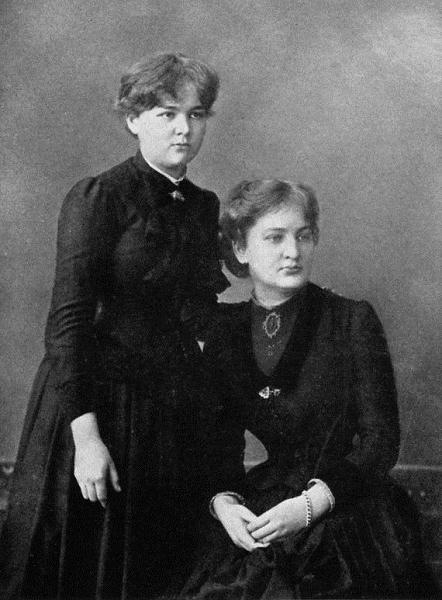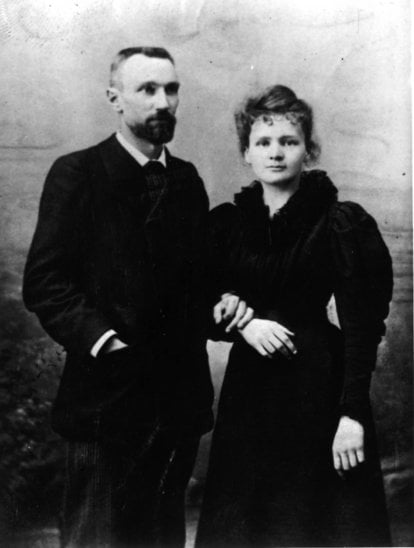Other things to occupy your mind with other than COVID-19 - Bananas are curved because they grow towards the sun.
Bananas go through a process called “negative geotropism.” Instead of growing towards the ground, they start growing towards the sun. The fruit grows against gravity, which gives the banana its familiar curved shape.
Today is a celebration of Bittersweet Chocolate with Almonds
November 7, 1932 -
The Buck Rogers in the 25th Century radio show, notable as the first science-fiction program on radio, first hit the airwaves as a 15-minute broadcast on CBS Radio on November 7, 1932.
The show related the story of Anthony Buck Rogers finding himself in waking up in the 25th century, after having been help in suspended animation for almost 500 years.
November 7, 1951 -
The under-rated British film-noir (based on a Graham Greene novel and screenplay written by Graham Greene,) directed by John Boulting, Brighton Rock, starring Richard Attenborough, Hermione Baddeley, and William Hartnell opened on this date.
Filming actually took place in Brighton using hidden cameras in amongst the real-life crowds. This was mainly because the Brighton authorities objected to the way their town was being depicted as a haven for gangsters.
November 7, 1955 -
The neo-realist film classic, Umberto D., was released in the US on this date.
This is the first and only film for non-actor Carlo Battisti, who plays the leading role in the film. His real occupation was that of a Professor of Linguistics at the Università degli Studi di Firenze.
November 7, 1956 -
An early masterpiece from Fellini, I Vitelloni, was released in the US on this date.
Fellini intended to continue the story of the protagonist of this film, Moraldo Rubini, in a movie to be entitled Moraldo in the City, in which the young man would experience big city life for the first time, and suffer frustration, grief and disillusionment. The film was never made, but the script has been published in English, and some aspects of the narrative apparently inspired parts of Fellini's later film, La Dolce Vita.
November 7, 1963 -
The comedy that features one of the largest collections of American comedians ever brought together, It's a Mad Mad Mad Mad World, premiered on this date.
For the intermission of the premiere engagement at the Cinerama Dome in Hollywood, the filmmakers recorded messages supposedly sent over police radios describing what was happening to various characters. These messages were played not only in the auditorium during the intermission but at the concession stand and even in the bathrooms.
November 7, 1975 –
The pilot for the series Wonder Woman, The New Original Wonder Woman TV movie starring Lynda Carter premiered on ABC-TV, on this date.
When Lynda Carter received word over the phone from her agent that she had landed the role of Wonder Woman, she only had $25 in her bank account and was ready to move back home.
November 7, 1979 -
Loosely based on the life of Janis Joplin, the film, The Rose, starring Bette Midler, was released on this date.
Mark Rydell would only agree to direct if he could cast Bette Midler in the lead. Before that, Midler had only appeared in bit parts, and was known primarily as a nightclub singer.
Don't forget to tune in to The ACME Eagle Hand Soap Radio Hour today
Today in History:
Maria Sklodowska was born in Warsaw, Poland, on November 7, 1867. Poland was controlled by Russia at the time, so Maria was referred to as Manya, causing her mother to die. This left Manya and her four older siblings in care of their father, who was caught teaching Polish and therefore prohibited from earning money.
To help support her father, Manya began tutoring a family in the country outside Warsaw. Her sister Bronya moved to Paris to study medicine and become a famous doctor, so Manya sent money to her, also. This allowed Bronya to marry another medical student and begin practicing medicine in Paris.
Bronya and her husband invited Manya to live with them in Paris and study at the Sorbonne, where she could call herself Marie. This appealed to the young woman, who quickly earned master's degrees in physics and mathematics. She enjoyed Paris so much she couldn't bear to return to Poland and to understand her attraction to Paris she began a study of magnetism.
To conduct her magnetism research she needed a larger lab, however, so she married a Frenchman named Pierre and used his. One of Pierre's friends had been experimenting with Uranium, which piqued Marie's curiosity. She began experimenting with it herself, and ultimately discovered something she called "radio-activity." This eventually led to her discovery of Radium, for which she received the Nobel Prize for Chemistry in 1911.
Marie Curie's research would eventually culminate in the development of the atomic bomb, but unfortunately she died before having the opportunity to see the full flowering of her hard work.
November 7, 1872 -
The cargo ship Mary Celeste sailing from New York, never reached Genoa. Four weeks later it is found completely abandoned, whereabouts of the ten man crew unknown.
The ship's cargo was alcohol, so you decide.
November 7, 1874 -
The famous political cartoonist Thomas Nast (a staunch Republican) first used an elephant to symbol for the Republican Party on this date.
He choice the elephant because of the animal's great size, intelligence, strength, and dignity.
November 7, 1916 -
Jeanette Rankin became the first woman to hold a high government office in the United States when on this date she was elected to the United States House of Representatives from the state of Montana.
A lifelong pacifist, she was the only legislator to vote against American involvement in both World War I and World War II.
November 7, 1940 -
The newly completed Tacoma Narrows Bridge, opened barely four months before, swayed and collapsed in a 42 mile-per-hour wind on this date.
There were no casualties except a dog trapped in a car stranded on the bridge. A rescue was attempted (by the man with the pipe), but the frightened animal would not leave the car.
November 7, 1962 -
Richard M. Nixon, 49, who had been in politics for 16 years, failed in a bid to become governor of California, held what he called his last press conference, telling reporters, "You won't have Nixon to kick around anymore," on this date.
Nixon was able to come back from his defeat and be elected president of the United States just six years.
November 7, 1965 -
The Pillsbury Doughboy made its first appearance on this date.
You may refer to the creature as it; marketing may call it a Doughboy but there is no evidence of genitalia.
November 7, 1983 -
An anonymous phone called notified the White House authorities that a bomb had been placed close to the Senate chamber by the "Armed Resistance Unit" and was set to explode. The Senate chamber was empty at the time, and nobody was injured.
The bomb did, however, cause about $250,000 in damage. Six Resistance Conspiracy members were arrested for the bombing five years later.
A portrait of Daniel Webster, received the explosion’s full force. The blast tore away Webster’s face and left it scattered across the Minton tiles in one-inch canvas shards. Quick thinking Senate curators rescued the fragments from debris-filled trash bins. Over the coming months, a capable conservator painstakingly restored the painting to a credible, if somewhat diminished, version of the original.
November 7, 2000 -
Hillary Clinton ran and won the election to become the junior senator from New York (although she had never lived in the state previously,) on this date, becoming the first First Lady in US history to seek and win a political office.
She was re-elected to the Senate in 2006. And oh yeah, she ran for president a couple of times.
November 7, 2000 -
The US Presidential election of the "hanging chad" occurred. The controversial Presidential election decision between Vice President Al Gore and Texas Governor George W. Bush ended up being addressed by the US Supreme Court in December in the Bush v. Gore case.
The issue surrounded voting irregularities in Florida and how the 25 electoral votes from that state would be decided. One of the more memorable issues had to do either with voter errors or machine errors that left the paper ballots with "hanging chads" that weren't punched through, making it difficult to ascertain the voter's true intention. Bush won the election, which was the closest race since the election of 1876 between Rutherford B. Hayes and Samuel J. Tilden. This election also made Bush the fourth president in US history to win the electorate vote without winning the popular vote.
Shhh,
And so it goes.
75








No comments:
Post a Comment